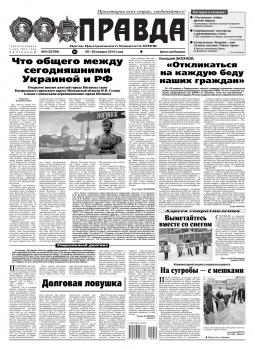Экономика
Различные книги в жанре ЭкономикаКапитал. Полная квинтэссенция 3-х томов
«Капитал» – главный труд немецкого экономиста и политического деятеля Карла Маркса, несомненно, оказавший влияние на мировую историю. Данное издание – это основные положения и идеи содержащиеся в «Капитале», обработанные немецким экономистом и политиком Ю. Борхардтом. Как отмечает сам Борхардт, ему «удалось передать теорию учения в правильной форме», что «дает ключ непосвященному или новичку к ее пониманию». Книга будет интересна как специалистам, так и всем интересующимся вопросами социально-экономических теорий.
Основы экономической теории 4-е изд., пер. и доп. Учебник для СПО
Новое издание классического учебника «Экономическая теория» подготовлено коллективом авторов кафедры экономической теории МГТУ имени Н. Э. Баумана под редакцией блестящего экономиста, доктора экономических наук, профессора Е. Н. Лобачевой. Книга дает читателю представление об общих подходах и методах исследования экономических процессов с учетом перемен, произошедших в экономической жизни нашей страны в последние годы. Учебник позволит студентам сформировать базовый уровень экономической грамотности, составить целостное представление о сути экономических явлений.
Институты правят экономикой
В книге в научно-популярной форме объясняется важность институтов как правил, регулирующих экономику. Изложены теоретико-методологические основы применения институтов, обеспечивающих согласование экономических интересов, обоснован вред импорта чужих институтов и опасность институциональных ловушек. Даны практические рекомендации по реализации институциональной политики в Республике Беларусь и Российской Федерации. Работа предназначена для руководителей различного уровня, предпринимателей. Она будет полезна для ученых, аспирантов, магистрантов, студентов-дипломников и для всех, кто интересуется современными подходами к управлению экономикой.
Труд 92-93-2018
Одна из старейших общественно-политических газет (издается с февраля 1921 года). Корреспонденты «Труда» ежедневно рассказывают читателям о политике, культуре, спорте, экономике, жизни общества, самых интересных новостях дня и многом другом. Издание рассчитано на широкий круг читателей.
Loss Models. Further Topics
An essential resource for constructing and analyzing advanced actuarial models Loss Models: Further Topics presents extended coverage of modeling through the use of tools related to risk theory, loss distributions, and survival models. The book uses these methods to construct and evaluate actuarial models in the fields of insurance and business. Providing an advanced study of actuarial methods, the book features extended discussions of risk modeling and risk measures, including Tail-Value-at-Risk. Loss Models: Further Topics contains additional material to accompany the Fourth Edition of Loss Models: From Data to Decisions, such as: Extreme value distributions Coxian and related distributions Mixed Erlang distributions Computational and analytical methods for aggregate claim models Counting processes Compound distributions with time-dependent claim amounts Copula models Continuous time ruin models Interpolation and smoothing The book is an essential reference for practicing actuaries and actuarial researchers who want to go beyond the material required for actuarial qualification. Loss Models: Further Topics is also an excellent resource for graduate students in the actuarial field.
Saving the Market from Capitalism. Ideas for an Alternative Finance
This new book by two leading economists is a far-reaching analysis of the role and organization of the financial system in the aftermath of the economic crisis. The authors argue that the financial markets, as currently organized, hinder genuine market transactions and therefore harm the economy, along with any chance of sustained recovery. Despite the crisis, the power of the financial markets has continued to grow. Far from being subjected to major restructuring or regulation, they continue to rule largely unchecked – laying down economic policies, deposing governments, disrupting social contracts and reshaping international alliances. The time has come to think through more radical proposals for reform – to save other markets from the overwhelming power of the one market that has come to dominate them all, the financial market. Through a detailed examination of specific measures – from policies aimed at reigning in financial markets to the idea of local currencies that could be used to foster economic development within localities and regions – the authors develop a set of proposals that would help to revitalize markets, free them from the domineering power of finance and re-establish the relationship between creditor and debtor that was severed by the rise of the modern financial system. Building on their very successful work The End of Finance, this new and timely book will appeal to students of economics, politics and sociology as well as to general readers interested in one of the key issues of our time.
Introductory Relational Database Design for Business, with Microsoft Access
A hands-on beginner’s guide to designing relational databases and managing data using Microsoft Access Relational databases represent one of the most enduring and pervasive forms of information technology. Yet most texts covering relational database design assume an extensive, sophisticated computer science background. There are texts on relational database software tools like Microsoft Access that assume less background, but they focus primarily on details of the user interface, with inadequate coverage of the underlying design issues of how to structure databases. Growing out of Professor Jonathan Eckstein’s twenty years’ experience teaching courses on management information systems (MIS) at Rutgers Business School, this book fills this gap in the literature by providing a rigorous introduction to relational databases for readers without prior computer science or programming experience. Relational Database Design for Business, with Microsoft Access helps readers to quickly develop a thorough, practical understanding of relational database design. It takes a step-by-step, real-world approach, using application examples from business and finance every step the way. As a result, readers learn to think concretely about database design and how to address issues that commonly arise when developing and manipulating relational databases. By the time they finish the final chapter, students will have the knowledge and skills needed to build relational databases with dozens of tables. They will also be able to build complete Microsoft Access applications around such databases. This text: Takes a hands-on approach using numerous real-world examples drawn from the worlds of business, finance, and more Gets readers up and running, fast, with the skills they need to use and develop relational databases with Microsoft Access Moves swiftly from conceptual fundamentals to advanced design techniques Leads readers step-by-step through data management and design, relational database theory, multiple tables and the possible relationships between them, Microsoft Access features such as forms and navigation, formulating queries in SQL, and normalization Introductory Relational Database Design for Business, with Microsoft Access is the definitive guide for undergraduate and graduate students in business, finance, and data analysis without prior experience in database design. While Microsoft Access is its primary “hands-on” learning vehicle, most of the skills in this text are transferrable to other relational database software such as MySQL.
Loss Models. From Data to Decisions
Praise for the Third Edition «This book provides in-depth coverage of modelling techniques used throughout many branches of actuarial science. . . . The exceptional high standard of this book has made it a pleasure to read.» —Annals of Actuarial Science Newly organized to focus exclusively on material tested in the Society of Actuaries' Exam C and the Casualty Actuarial Society's Exam 4, Loss Models: From Data to Decisions, Fourth Edition continues to supply actuaries with a practical approach to the key concepts and techniques needed on the job. With updated material and extensive examples, the book successfully provides the essential methods for using available data to construct models for the frequency and severity of future adverse outcomes. The book continues to equip readers with the tools needed for the construction and analysis of mathematical models that describe the process by which funds flow into and out of an insurance system. Focusing on the loss process, the authors explore key quantitative techniques including random variables, basic distributional quantities, and the recursive method, and discuss techniques for classifying and creating distributions. Parametric, non-parametric, and Bayesian estimation methods are thoroughly covered along with advice for choosing an appropriate model. New features of this Fourth Edition include: Expanded discussion of working with large data sets, now including more practical elements of constructing decrement tables Added coverage of methods for simulating several special situations An updated presentation of Bayesian estimation, outlining conjugate prior distributions and the linear exponential family as well as related computational issues Throughout the book, numerous examples showcase the real-world applications of the presented concepts, with an emphasis on calculations and spreadsheet implementation. A wealth of new exercises taken from previous Exam C/4 exams allows readers to test their comprehension of the material, and a related FTP site features the book's data sets. Loss Models, Fourth Edition is an indispensable resource for students and aspiring actuaries who are preparing to take the SOA and CAS examinations. The book is also a valuable reference for professional actuaries, actuarial students, and anyone who works with loss and risk models. To explore our additional offerings in actuarial exam preparation visit www.wiley.com/go/c4actuarial .









